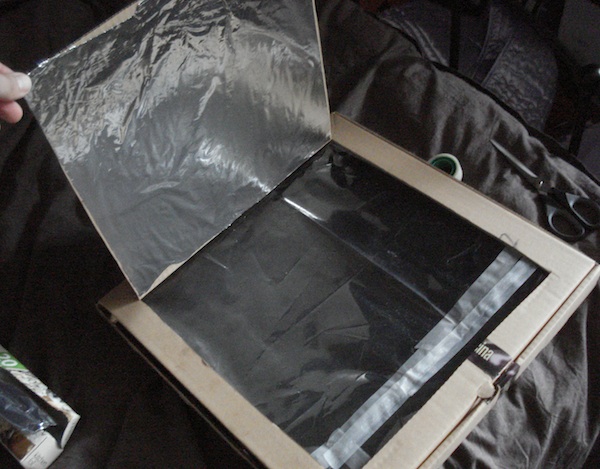In the cloakroom queue after seeing Leftfield last weekend, while London was still covered with snow, another punter spotted my bike pannier.
"You're cycling?" he asked in tones of mingled surprise and enthusiasm. "Wow!"
"I'd far rather that than hanging around for the night bus," I said.
"Nice one!" he said with a grin that indicated he still thought I might be a little deluded; and I went off to start layering up for the ride home.
But really, the weather has to be really pretty dreadful for public transport to be a better bet than cycling. (Even more so when, as on Friday, the public transport option is two night buses and a very chilly 20-minute wait at Elephant & Castle, watching inebriated revellers throw up into the gutter). There are a few precautions that are worth taking first.
Wrap up warm
Perhaps an obvious one, but cold hands don't operate brakes well, so find yourself some long-fingered gloves. Woolly gloves are better than nothing, but the wind tends to blow right through them; really you want gloves that are at least windproof and preferably waterproof as well. If, like me, you have really rubbish circulation, consider glove liners as well.
A
Buff is useful as a scarf/hat; alternatively, if you're wearing a regular scarf, make sure the ends are safely tucked into your jacket and can't get caught in any of the moving bits of the bike. If you're suffering from chilly feet as well as chilly fingers, waterproof overshoes are really helpful
*.
Check over your bike
Letting a little bit of air out of the tyres is a good bet if riding on slippery surfaces like snow, slush, or ice, as it increases the amount of contact surface with the road. If you want to take the really hardcore route, you could switch to studded tyres (or do your own DIY version either
with screws or
with cable ties!). Tyres with tread may be a good idea if you normally ride on skinny smooth tyres.
You should also clean your bike a bit more regularly, as grit and salt splash up onto the frame, and are bad for the metal if left there. Your chain might need a slightly heavier-duty oil than in the summer, and will probably also need oiling more regularly. If you're nearly at the point where you need to replace chain and/or cassette, it's probably worth waiting, if you can, until the spring, as they'll wear much more quickly in this weather.
Make sure that your brakes are working well -- slippery rims will slow your braking down.
Riding in snow
The most important thing to remember is not to make any sudden moves. Stop and turn more slowly and carefully than you normally would, and don't corner too sharply or your back wheel may come out from under you. Brake well in advance, and gently.
Be more aware of hazards like metal access covers, which get very slippery in rain, snow, or ice. Watch out for black ice, and if in doubt, it may be worth getting off and walking for a bit if the surface is particularly treacherous (minor local roads may not have been gritted well or at all). However, if you find yourself already riding over the ice when you notice it, just stay calm, keep pedalling, and don't turn or brake if you can avoid it. (If you have to, brake very gently.)
Stay well out of the gutter, which is where all the snow and slush will have been pushed by the cars. Of course, you should
always be riding well out of the gutter to maximise your visibility, but in poor conditions you may want to ride even further out. You'll be more readily seen, and you'll be more likely to be able to stay on the dry part of the road. Where possible, choose where you're riding to stay on the dry patches, but
be careful – don't put yourself in danger by riding over on the wrong side of the road unless you're very, very certain that it's safe to do so. If in doubt, get off and walk until it's safe again.
If it's dingy, foggy, or actually snowing, put your lights on to increase your visibility, as well.
In summary: take it carefully, allow more time to get where you're going, wrap up warm; and you'll be sailing merrily past all the bus queues despite the weather.
* This year I've been wearing bike sandals and waterproof socks, instead of switching to my lightweight bike shoes in the autumn. (I confess that a significant driver for this is the fact that the dog chewed both velcro and laces off the bike shoes back in April, and I still haven't sorted that out.) Somewhat to my surprise, it turns out that thick socks + waterproof socks + sandals has kept my feet warmer than my closed-toe shoes ever did. The overshoes are good if it's below zero (when I'd need them anyway). I think this is probably because wearing two pairs of socks in my regular shoes doesn't leave enough room for my toes, reducing circulation and thus making them cold. This doesn't happen in the sandals. Of course one is then wearing sandals with socks, but I am less bothered about that than I am about having cold feet!




